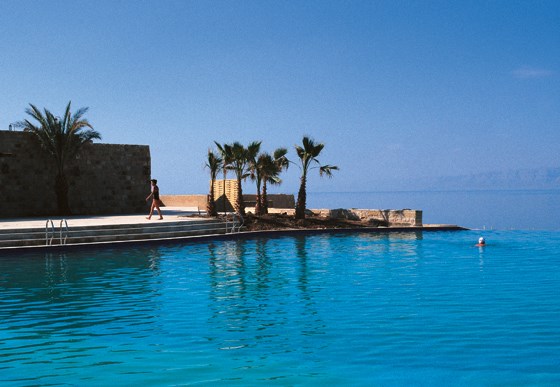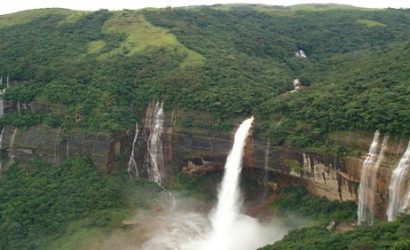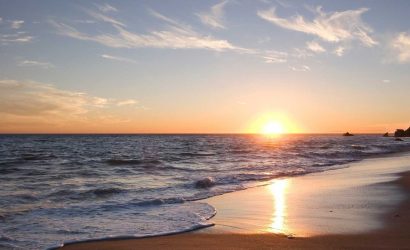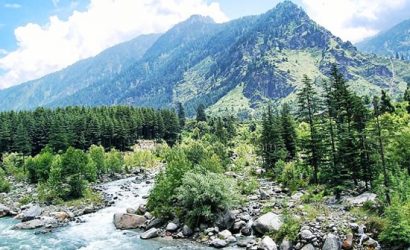07 days / 06 nights
Price : On Request
Itinerary
Day 1 :
Amman Airport – Amman
Meet & assist at Amman Airport
Transfer to Amman (43 km)
Overnight at Amman hotel.
Day 2 :
Amman –Jerash – Ajloun – Pella – Umm Qays - Amman
Breakfast at hotel
Transfer to Jerash (48 km) - The city's golden age came under Roman rule, during which time it was known as Gerasa, and the site is now generally acknowledged to be one of the best preserved Roman provincial towns in the world. Hidden for centuries in sand before being excavated and restored over the past 70 years, Jerash reveals a fine example of the grand, formal provincial Roman urbanism that is found throughout the Middle East.
Continue to Ajloun (22 km) - Ajloun Castle (Qal'at ar-Rabad) was built in 1184 by 'Izz ad-Din Usama bin Munqidh, a general of Saladin, who defeated the Crusaders in 1187. From its hilltop position, Ajloun Castle protected the communication routes between south Jordan and Syria, and was one of a chain of forts, which lit beacons at night to pass signals from the Euphrates as far as Cairo.
Proceed to Pella (53 km) - Pella is exceptionally rich in antiquities, some of which are exceedingly old.
Besides the excavated ruins from the Greco-Roman period, including an Odeon (theatre), Pella offers visitors the opportunity to see the remains of a Chalcolithic settlement from the 4th millennium BC, the remains of Bronze and Iron Age walled cities, Byzantine churches and houses, an Early Islamic residential quarter, and a small medieval mosque.
Transfer to Umm Qays (23 km) - Gadara (now Umm Qays) perched on a splendid hilltop overlooking the Jordan Valley and the Sea of Galilee, city boasts impressive ancient remains, such as the stunning black basalt theatre, the basilica and adjacent courtyard strewn with nicely carved black sarcophagi, the colonnaded main street and a side street lined with shops, an underground mausoleum, two baths, a nymph ion, a city gate and the faint outlines of what was a massive hippodrome.
Back to Amman (100 km )
Overnight at Amman hotel.
Day 3 :
Amman City Tour – Madaba – Mt. Nebo - Dead Sea – Amman
Breakfast at hotel
Start Visit in Amman – City Tour – A sprawling city spread over 19 hills, or "jebels," Amman is the modern - as well as the ancient - capital of the Hashemite Kingdom of Jordan. Known as Rabbath-Ammon during the Iron Age and later as Philadelphia, the ancient city that was once a
part of the Decapolis league, now boasts a population of around 2.3 million people.
Transfer to Madaba (32 km) – Between the 4th and 7th centuries AD, the prosperous ecclesiastical centre of Madaba produced one of the world’s finest collections of Byzantine mosaics, many fine examples of which are well preserved. Madaba is home to the famous 6th century Mosaic Map of Jerusalem and the Holy Land. With two million pieces of vividly colored local stone, it depicts hills and valleys, villages and towns as far as the Nile Delta.
Continue to Mt. Nebo (15 km) - From Mount Nebo’s windswept promontory, overlooking the Dead Sea, the Jordan River Valley, Jericho and the distant hills of Jerusalem, Moses viewed the Holy Land of Canaan that he would never enter. Mount Nebo became a place of pilgrimage for early Christians from Jerusalem and a small church was built there in the 4th century to commemorate the end of Moses' life. The church was subsequently expanded in the 5th and 6th centuries into the present-day large basilica with its stunning collection of Byzantine mosaics.
Transfer to Dead Sea (56 km) – 2 hours of leisure on the sea shore of Dead Sea Spa hotel the lowest point on the face of the earth, over 400 meters (1,312 ft.) below sea level. The leading attraction at the Dead Sea is the warm, soothing, super salty water itself – some ten times saltier than sea water, and rich in chloride salts of magnesium, sodium, potassium, bromine and several others. The unusually warm, incredibly buoyant and mineral-rich waters have attracted visitors since ancient times, including King Herod the Great and the beautiful Egyptian Queen, Cleopatra.
Back to Amman (72 km )
Overnight at Amman hotel.
Day 4 :
Amman – Kerak – Dana - Shobak– Petra
Breakfast at hotel
Transfer to Kerak (118 km) - The castle in itself is all the more impressive as an example of the Crusaders' architectural military genius. Castle. Karak's most famous occupant was Reynald de Chatillon, whose reputation for treachery, betrayal and brutality is unsurpassed. Reynald was taken prisoner and beheaded by Saladin himself, marking the beginning of the decline in Crusader fortunes. The castle was enlarged with a new west wing added by the Ayyubids and Mameluks.
Continue to Dana (58 km) - Dana Nature Reserve covers 308 square kilometers and is a world of natural treasures. It is composed of a chain of valleys and mountains which extend from the top of the Jordan Rift Valley down to the desert lowlands of Wadi Araba. The Reserve contains a remarkable diversity of landscapes that range from wooded highlands to rocky slopes and from gravel plains to dunes of sand. Moreover, Dana supports diverse wildlife which includes a variety of rare species of plants and animals.
Proceed to Shobak (32 km) - A lonely reminder of former Crusader glory is Shobak Castle. Once called "Mont Real". It is perched on the side of a mountain, with a grand sweep of fruit trees below. The castle's exterior is impressive, with a forbidding gate and encircling triple wall. Despite the precautions of its builder, the fortress fell to Saladin only 75 years after it was raised.
Arrival to Petra (35 km)
Overnight at Petra hotel.
Day 5 :
Petra
Breakfast at hotel
Transfer to Petra site for full day visit - The giant red mountains and vast mausoleums of a departed race have nothing in common with modern civilization, and ask nothing of it except to be appreciated at their true value - as one of the greatest wonders ever wrought by Nature and Man although much has been written about Petra, nothing really prepares you for this amazing place. It has to be seen to be believed. Petra the world wonder is without doubt Jordan’s most valuable treasure and greatest tourist attraction. It is a vast, unique city, carved into the sheer rock face by the Nabataeans, an industrious Arab people who settled here more than 2000 years ago, turning it into an important junction for the silk, spice and other trade routes that linked China, India and southern Arabia with Egypt, Syria, Greece and Rome.
Overnight at Petra hotel.
Day 6 :
Petra – Beidha (Little Petra) – Wadi Rum - Amman
Breakfast at hotel
Transfer to Beidha (18 km) - Little Petra was inhabited by the Nabataeans and has lots of tombs, water containers and channels, it has a small path that leads to some of the inside area, Siq al Bared, the scale of this area and the fact that it is a continuation of Petra gave it the name of Little Petra. It is literally hidden away in the center of a mountain.
Proceed to Wadi Rum (113 km) - 4x4 Jeep Tour in Wadi Rum for 2 hours - This is a stupendous, timeless place, virtually untouched by humanity and its destructive forces. Here, it is the weather and winds that have carved the imposing, towering skyscrapers, so elegantly described by T.E. Lawrence as “vast, echoing and god-like”.
Back to Amman (324 km )
Overnight at Amman hotel.
Day 7 :
Amman – Amman Airport
Breakfast at hotel
Transfer to Amman Airport for departure (43 km).






